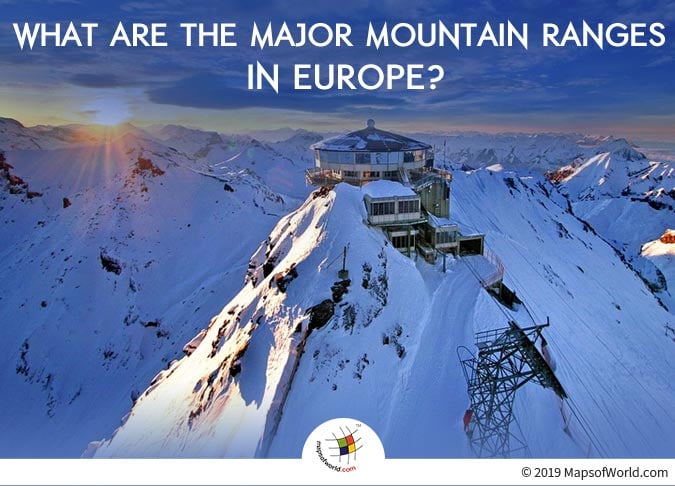

Europe is home to many mountain ranges. Some tall, some long, and some with deep historical significance. Let’s look at these major mountain ranges in Europe. Below is a list.
1. Ural Mountains: Also known as the Urals, these mountain ranges serve as the boundary between Asia and Europe. Since the 18th century, they’ve been boosting the mineral sector of Russia as they are rich in resources like coal, metal ores etc. The highest peak of this range is Mount Narodnaya, standing tall at 6,217 ft.
2. Caucasus Mountains: These ranges lie at the intersection of Asia and Europe. They surround the region of Caucasus and are extended from the Caspian Sea to the Black Sea. The highest peak is Mount Elbrus with a height of 18,510 ft. These mountains include Lesser Caucasus which is in the south and Greater Caucasus which is in the north.
3. Carpathian Mountains: Stretching about 932 miles, this mountain range is Europe’s 3rd longest mountain range after the Ural and Scandinavian Mountains. These mountains run across Eastern and Central Europe, forming an arc. They are home to wild animals like lynxes, chamois, wolves, and brown bears. Their highest peak is Gerlachovský štít, standing at 8,711 ft.
4. Alps: These mountains are completely in Europe. Stretching for about 750 miles, they separate Central and Western Europe from the Southern part. They run across a total of eight Alpine countries; Slovenia, Germany, Austria, Liechtenstein, Monaco, Italy, Switzerland, and France. The highest peak is Mont Blanc which has an elevation of 15,776.7 feet.
5. Apennines: Extending 750 mi, these mountains consist of a number of parallel smaller chains. Running through Italy, they join the Ligurian Alps in the northwest and Reggio di Calabria in the southwest. The tallest peak is Corno Grande which stands at 9,554 ft.
6. Pyrenees: This range of mountains form a border between Spain and France. Located in southwestern Europe, it stretches for about 305 mi. They also form a border between the Iberian Peninsula and the rest of continental Europe.
7. Cantabrian Mountains: Running across northern Spain, they cover about 190 miles. The highest peak is Torre de Cerredo which stands tall at 8,688 ft. These mountains are known for skiing, hiking, and challenging climbing routes. They run from the Pyrenees to the Galician Massif.
8. Scandinavian Mountains: Running through the Scandinavian Peninsula, it stretches for about 1,100 mi. Its highest peak is Galdhøpiggen with an elevation of 8,100 ft. Although not very high, these mountains can be very steep in some places. In the north, they serve to form the border between Sweden and Norway.
9. Dinaric Alps: These are one of the most extensive and rugged mountains in Europe. Running for 401 miles, this mountain range is located in the Southeastern and Southern Europe. It also separates the Adriatic Sea from the continental Balkan Peninsula. Its highest peak is Maja Jezercë with a height of 8,839 ft. These run from Albania in the southeast through Kosovo, Montenegro, Serbia, Herzegovina, Bosnia, Croatia, and Slovenia to Italy in the northwest.
10. Balkan Mountains: This mountain range is located in central Balkans and runs for 330 miles west-to-east. Its highest point is Botev Peak which is elevated at 7,795 ft. It runs from Cape Emine to Vrashka Chuka Peak. The mountains also played a major role in Bulgarian nation’s development.
Related Links:
The Republic of Madagascar is an island country located in the Indian Ocean, off the…
The Euro is the official currency of the European Union. It is, however, not incumbent…
There are many countries or regions that are partially recognized by the UN, have disputes…
The Alaska Statehood Act was signed into law by President Dwight D. Eisenhower in 1958,…
The name Persia may, however, only be used to refer to Iran in some contexts.…
Hawaii is an Island State in the US. It is one of the 50 states…